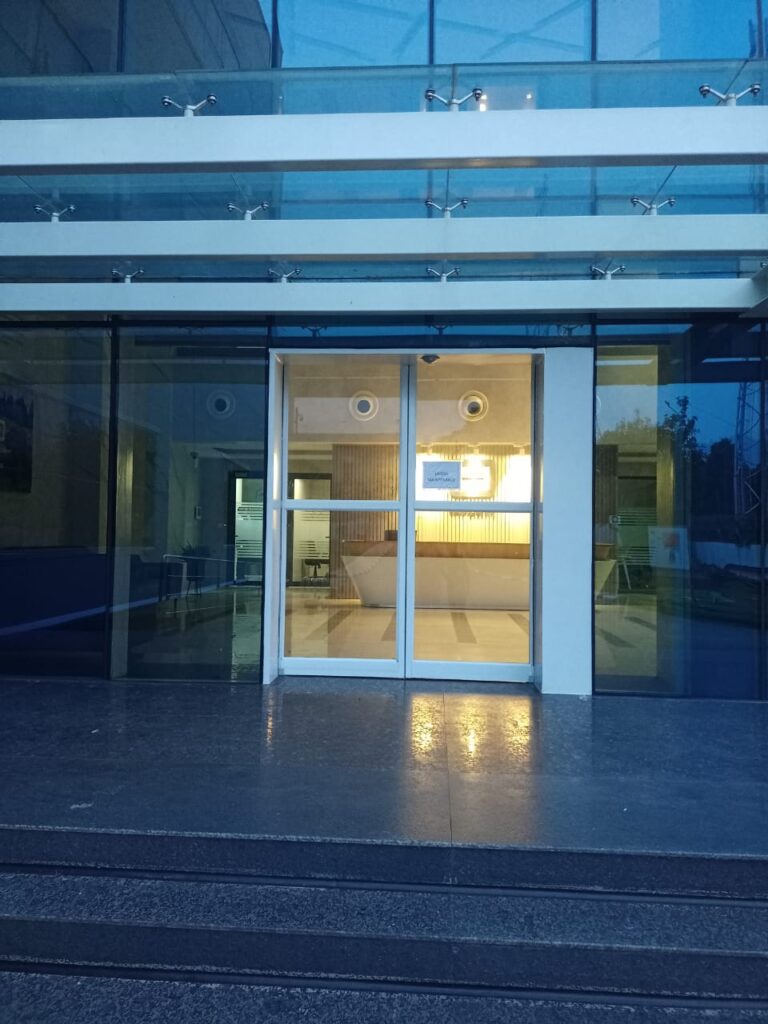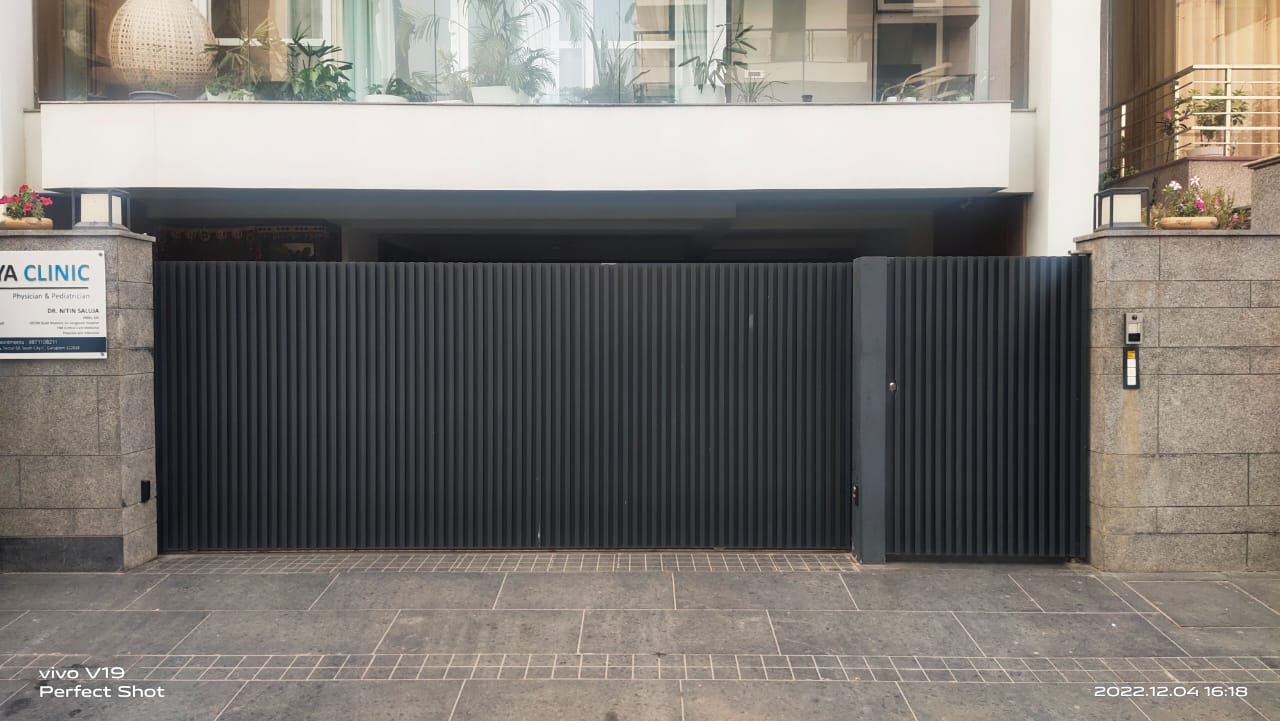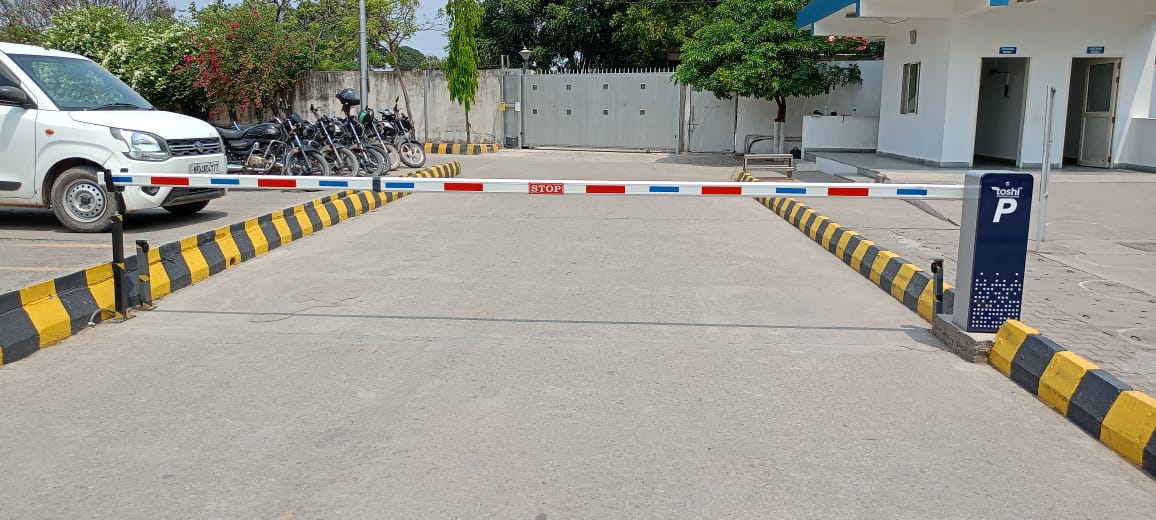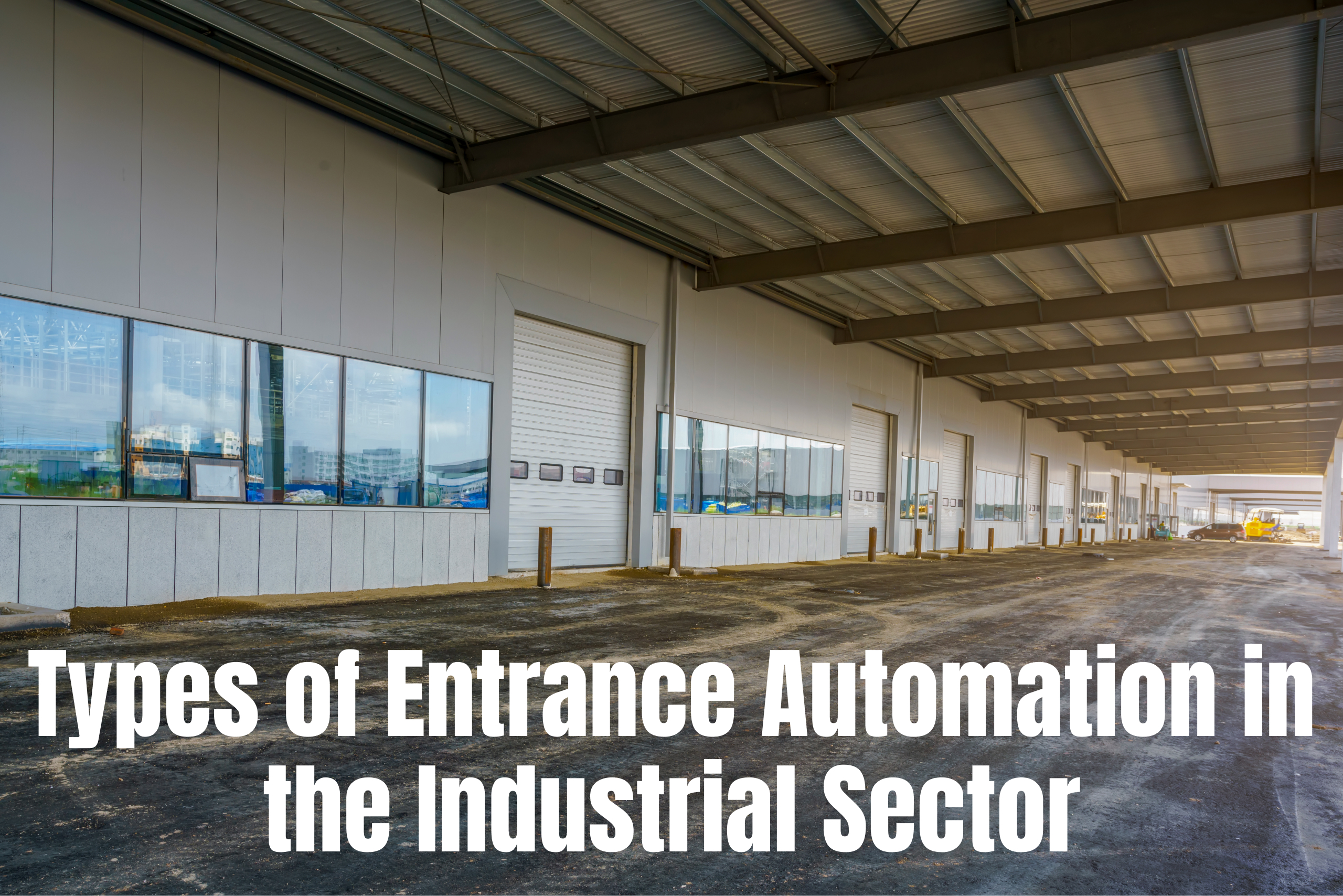Automatic doors, a familiar sight in our daily lives, are frequently disregarded, despite their importance in modern infrastructure. These doors, which open automatically as a person approaches, have transformed accessibility and convenience in both business and residential environments. This article goes into the world of automatic doors, covering their history, mechanisms, types, benefits, and potential future developments.
History
When were automatic doors invented?
The notion of automatic doors dates back to the first century AD, when mathematician Heron of Alexandria in Roman Egypt is credited with creating the first known mechanical door. His invention used heat from a fire to create air pressure in a brass jar, which then pumped water into nearby containers. These containers served as weights that, via a sequence of ropes and pulleys, opened the temple’s doors about the time people were supposed to arrive for worship.
Evolution and Modern Advancements?
Engineers Horace H. Raymond and Sheldon S. Roby of Stanley Works created the contemporary automatic door in 1931. The patent can be found here. They created the first model of an optical device that activated the opening of an automatic door, which was put at Wilcox’s Pier Restaurant in West Haven, Connecticut. Dee Horton and Lew Hewitt designed the first sliding automatic door in 1954, with a mat actuator. They co-founded Horton Automatics Inc. in 1960 and introduced the first commercial automatic sliding door to the market. Microwave motion detectors became widely used in automated doors when the Gunn diode was invented in the 1970s. In 1980, the first automatic doors using an infrared sensor were Introduced.
Types of Sliding Doors

Automatic Sliding Doors | Toshi Automation Solutions Limited
| Types | Description |
| Sliding Doors | These are the most popular automatic doors found in commercial settings. |
| Swing Doors | These doors are frequently utilized in home settings and modest commercial locations. |
| Revolving Doors | These doors are typically found in high-traffic places such as hotels and large office buildings. |
| Folding Doors | These doors are utilized when there is a restricted amount of space. |
| Special Doors | This comprises hermetic hospital doors and telescoping doors for large entries. |
How Automatic Doors Work?
Automatic doors are a common feature in both business and residential buildings, offering a simple and hands-free entry and exit. But how do these doors work? Automatic doors operate using a mix of sensors, motors, and control systems.
Sensors & Trigger Mechanism
The sensor is the primary component of an automatic door system. Sensors are devices that detect motion or presence in a given location. Automatic doors use a variety of sensors, which include:
- Microwave Sensors: produce microwave pulses and measure their reflection off a moving object. When a person or object approaches the door, the time required for reflection changes, causing the door to open.
- Infrared Sensors: operate by emitting infrared light. When a person or item interrupts this light, the sensor alerts the door operator to open the door.
- Pressure sensors: are commonly utilized in mat actuators. When someone steps on the mat, the pressure causes the door to open.
Door Operators & Mechanism
The door operator is activated when the sensor causes the door to open. The motorized mechanism that opens and closes the door is called the door operator. Different kinds of door operators are needed for various kinds of doors, including swing, revolving, and sliding doors.
When sliding doors are used, the operator usually moves the door along a track using a chain drive, gear, or belt. A mechanical arm is used by swing door operators to push or pull the door open. Typically, a motor located in the central shaft of a rotating door rotates the door.
Control Systems
The automatic door’s brain is the control system. It gives commands to the door operator after receiving inputs from the sensors. The speed at which the door opens and closes, the amount of time it takes for the door to begin closing, and the hold-open duration are all programmable in the majority of control systems.
Safety Features
One important feature of automatic doors is safety. Safety sensors used in the majority of automatic doors stop the door from closing in the event of an impediment. In the event of a power outage or other emergency, certain doors also contain a manual override feature that enables manual door opening.
Sensors, door operators, and control systems all work together seamlessly to operate automatic doors. Together, these elements offer a practical and secure route for both people and cargo.
Solutions
Modern infrastructure is now completely dependent on automatic doors since they offer increased security, accessibility, and convenience in a range of contexts. Let’s examine the various automatic door options that are offered for both home and business use.
Commercial Automatic Door Solutions
Strong and effective entrance solutions are frequently needed by commercial buildings in order to manage heavy traffic volumes and satisfy certain operating requirements. The following are a few popular kinds of commercial automatic doors:
- Sliding doors: are perfect for high-traffic locations like airports, shopping centers, and big office buildings. They can be made to open in two directions or one direction, and they offer a large opening for simple access.
- Swing Doors: Due to their adaptability, swing doors can be utilized in a range of business environments, such as restaurants, offices, and retail establishments. They can be set up to swing both ways, inward and outward.
- Revolving Doors: By limiting air exchange with the outdoors, revolving doors are ideal for high-traffic entrances and assist manage the internal climate.
- Telescopic Doors: These doors have a large opening and are appropriate for small entries. When the door opens, they are made up of several panels that glide over one another.
- Industrial Doors: These are designed for industrial applications and include options like roll-up doors, sectional doors, and high-speed doors.
Residential Automatic Door Solutions
In houses, residential automated doors improve accessibility and convenience. They can be very helpful for people who have trouble moving around. These are a few popular kinds of automatic doors for homes:
- Sliding Doors: Providing a smooth transition between interior and outdoor areas, automatic sliding doors are a common feature for patio entries.
- Swing Doors: Interior doors and main entrances can both have automatic swing doors installed. They can be especially helpful for doors that need to be opened and closed regularly, like the doors to utility rooms and garages.
- Garage Doors: Homeowners may open and close their automatic garage doors without getting out of their car, which adds convenience and security.
- Folding Doors: When a door’s swing needs to be kept to a minimum, automatic folding doors can be a perfect solution.
For both commercial and residential applications, automatic doors provide flexible solutions. You can improve your building’s use, accessibility, and visual appeal by selecting the appropriate kind of automatic door.
Benefits
Numerous advantages come with automatic doors, such as increased accessibility for individuals with disabilities, lower energy loss due to reduced heat loss, increased security due to customizable access, and convenience due to hands-free entry and departure.
For both home and business environments, automatic doors are a great option. Here’s a closer look at a few of these advantages:
| Benefits | Description | Examples |
| Accessibility | Everyone can easily access automatic doors, even the elderly, those with disabilities, and those carrying large or heavy objects. | Sliding and telescoping doors are two examples of automatic door types that work well for managing space in places with a lot of foot traffic. |
| Energy Efficiency | Automatic doors minimize heat input or loss by only opening when activated, hence cutting down on the amount of time they are left open. Not insignificant energy savings may result from this. | Automatic sliding doors reduce the quantity of hot or cold air that enters a mall from the outside, helping to manage the internal temperature. |
| Security | Access control systems can be linked with automatic doors to limit access to only authorized users. It is also possible to program them to lock themselves. | Automatic doors at corporate offices can be connected to employee ID cards to guarantee that only personnel are able to enter the structure. |
| Convenience | In addition to being convenient, hands-free operation offered by automatic doors is hygienic as well, limiting the growth of germs on door surfaces. | Healthcare personnel can move swiftly through hospitals with automatic doors since they don’t have to touch the door handles, which lowers the possibility of cross-contamination. |
| Aesthetics | Glass doors in particular give the facade of the building a sleek, contemporary appearance. They can be altered to match the building’s style and architectural specifications. | A hotel lobby featuring wide glass automatic doors gives guests a chic and inviting entry. |
| Space Management | Sliding and telescoping doors are two examples of automatic door types that work well for managing space in places with a lot of foot traffic. | An automatic sliding door makes effective use of available space in a tiny boutique store, enabling additional retail display near the entry. |
Choose the Right Automatic Door
Traffic Volume
One important consideration is the volume of foot traffic your building experiences. Automatic sliding or rotating doors are particularly useful in high-traffic locations like airports, retail centers, and big office buildings because they can manage a steady stream of people. Swing doors may be more appropriate for locations with less traffic, such as tiny offices or residential buildings.
Space
The kind of automatic door that should be installed can also depend on the available space. As telescoping or sliding doors don’t swing inward or outward, they are great for spaces that are tight on space. However, for bigger entries, swing doors or folding doors might be more appropriate.
Purpose
Another crucial factor to take into account is the door’s intended use. For example, you might need a hermetic door, which offers an airtight seal to prevent air leakage, if you need a door for a hospital or a clean room. You might wish to think about automatic doors with integrated access control systems if security is your top priority.
Cost Considerations
The kind, size, and functionality of automatic doors can have a big impact on how much they cost. It’s crucial to account for long-term energy use, maintenance, and potential repair costs in addition to the original purchase and installation prices.
Maintenance & Durability
Various automatic door models could need varying amounts of upkeep. While some may only need the occasional cleaning, others may require frequent expert servicing to guarantee proper operation. The door’s resilience is also crucial, particularly in high-traffic regions where wear and tear can be considerable.
Aesthetics
Finally, but just as importantly, the door’s aesthetic appeal should blend in with your building’s general architecture and style. You may choose an automatic door that best matches the appearance of your building because they are available in a wide range of designs, materials, and finishes.
In conclusion, selecting the ideal automatic door requires a thorough assessment of the unique requirements and conditions of your building. Seeking professional guidance customized to your particular scenario from a door installer or manufacturer is always a smart idea.
Installation & Maintenance
An automatic door’s durability and correct operation depend heavily on how it is installed and maintained. Here’s a thorough examination of each of these procedures:
Installation
The method for installing automatic doors differs based on the kind of door. The general steps involved are as follows:
- Site Preparation: Setting up the location where the door will be installed is the first stage. If there is an existing door, it might need to be removed in order to make sure the doorway is level and clean.
- Frame Installation: Next, the automatic door’s frame is put in place. This covers the pivot points on swing doors and the track on sliding doors.
- Installation of the Door: After that, the door leaf or leaves are fixed to the frame. To guarantee that the door closes smoothly and perfectly aligned, this must be done with great care.
- Installation of the Operator: Next, the motor that opens and closes the door—the door operator—is put in place. With sliding and swing doors, this is typically located above the door.
- Installation of the Sensors: Next, the sensors are put in place. Depending on the kind of sensor, these are often mounted above the door or buried in the ground.
- System Connection: After that, the control system is linked to the door operator and sensors. This entails joining the parts electrically and attaching them to a power supply.
- System Configuration: Setting up the system is the last stage. This covers adjusting the hold-open duration, the delay before the door closes, and the opening and closing speeds.
Maintenance
To guarantee automated doors last a long time and operate properly, regular maintenance is necessary. Here are a few important upkeep duties:
- Frequent Cleaning: To keep dust and grime out of the door and its parts, which can impede their functionality, they should be cleaned on a frequent basis.
- Frequent Inspection: It is possible to find any possible problems before they become major ones by doing a routine inspection of the door, frame, operator, and sensors. This should involve looking for any indications of damage, misalignment, or wear and tear.
- Lubrication: To ensure smooth operation, some sections of the door, such as the pivot points for swing doors or the tracks for sliding doors, may need to be oiled on a regular basis.
- Professional Servicing: Professional servicing may be necessary from time to time, depending on the type of door and how it is used. This may entail more thorough inspections and modifications that need specialized training and equipment.
Should you experience any problems with your automated door, it is advised that you contact an expert. Fixing the issue on your own may cause further harm or put your safety in danger.
The secret to making sure your automated door works well and lasts for many years is proper installation and routine maintenance. If you want detailed instructions for your specific door model, you should always consult the manufacturer’s instructions.
Future
The sector is being shaped by sustainability trends and technology breakthroughs, which bodes well for the future of automatic doors. The following are some major trends to be aware of:
Technological Advancements
- Artificial Intelligence (AI): AI is anticipated to have a big impact on automated doors in the future. Artificial intelligence (AI) has the potential to enhance the performance of automated doors by enabling features like personalized opening and closing based on user behavior and traffic patterns.
- Internet of Things (IoT): IoT technology makes it possible to link automated doors to other intelligent systems and gadgets. More advanced door management and monitoring, including real-time status updates, remote access control, and connection with security systems, may be possible as a result.
- Biometrics: The security aspects of automatic doors can be improved by utilizing biometric technologies, such as fingerprint scanning or facial recognition. This can be especially helpful in high-security locations where access must be tightly regulated.
Sustainability & Energy Efficiency Trends
The consideration of sustainability is becoming more and more crucial in the design of buildings, including automatic doors. Anticipate future automated doors to be more energy-efficient, contributing to a decrease in buildings’ overall energy usage. This can be achieved through improved insulation properties, more efficient operation, and integration with building energy management systems.
In addition, there is a growing trend towards using sustainable materials in the construction of automatic doors. This includes using recycled or recyclable materials, as well as materials with a lower environmental impact.
Marketing Predictions
In the upcoming years, it is anticipated that the market for automatic doors would continue to expand. The construction sector is expanding, urbanization is developing, and there is a growing need for accessible and energy-efficient building solutions. These factors are the main drivers of this growth.
In summary, more sophisticated, environmentally friendly, and integrated solutions that enhance usability, security, and energy efficiency are probably in store for automatic doors in the future. Future automatic door solutions should bring forth even more inventive ideas as technology progresses.
Conclusion
Since they were first invented in the first century AD, automatic doors have advanced significantly. They now form a crucial component of our contemporary infrastructure, offering security, accessibility, and convenience in both home and business environments. We may anticipate seeing even more creative and effective automatic door solutions in the future as technology develops.


